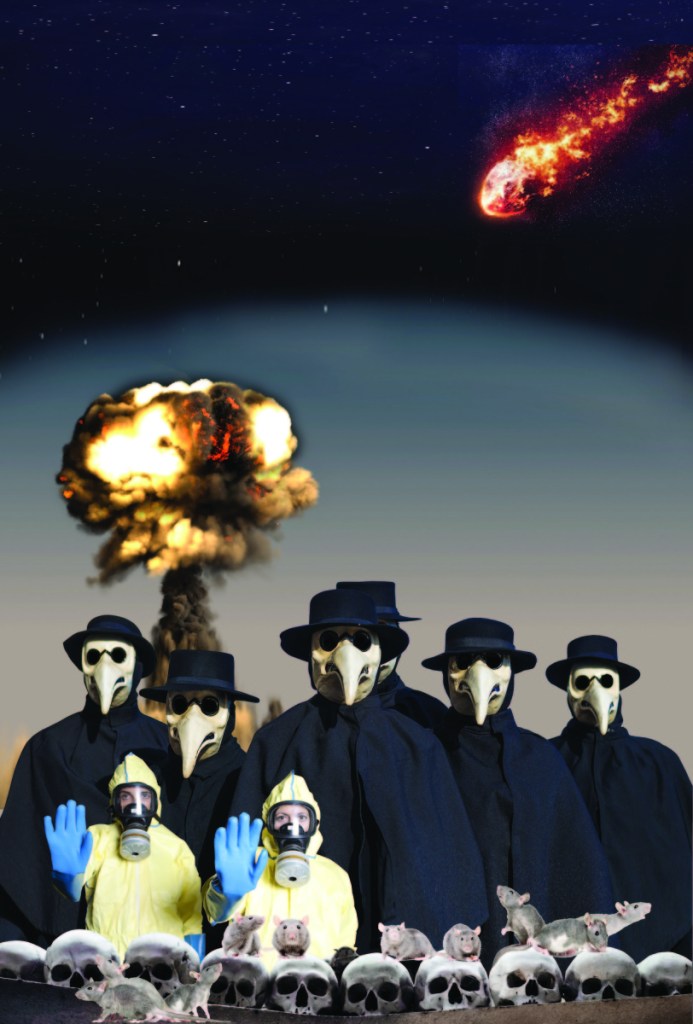It’s surprising how easy it is to brush off dire existential threats. We remain, for example, unprepared for the next pandemic flu, though experts warn it’s only a matter of time before a new strain capable of killing millions will emerge. As epidemiologist Michael Osterholm and writer Mark Olshaker wrote recently in The New York Times, we aren’t even prepared for this year’s seasonal flu. The outbreak has killed 37 children as of late January, according to the Centers for Disease Control and Prevention.
Osterholm and Olshaker wrote that much more money must go into the development of a so-called universal flu vaccine – one that would protect against any of flu’s many strains, including any new versions of the virus that might jump from animals to humans, as happened in 1918. In that pandemic flu, between 50 million and 100 million people died.
The argument makes sense, but it’s unlikely flu vaccine researchers will get a big boost. Why? One problem is that we citizens of the 21st century have also been warned about our “woeful” lack of preparedness for Ebola and similar disease outbreaks, a major earthquake, sea level rise, nuclear war and a massive asteroid striking the Earth. And if that isn’t enough, experts at MIT and Cambridge University are discussing how unprepared we are for threats of technology run amok, such as intelligent machines taking over the world.
In short, we’re all at risk of getting burned out on impending disasters. It can feel useless to get prepared for any one of these threats when all the others loom. We could try to rank and prioritize them in a rational way, though it’s not easy. Some of these risks, such as the major asteroid strike, aren’t likely to happen soon, but they will be very, very bad when they do happen. Others are more likely to occur in the coming decades and will kill lots of people, but they won’t end the world.
MAGNITUDE AND PROBABILITY
Peter Sandman, an independent consultant on risk communication, refers to these variables as magnitude and probability. Other variables to consider when assessing risk include the cost of preparedness, and how well any given course of preparedness will actually work. “You could go nuts trying to make sense of a nearly infinite number of variables,” he said.
Sandman said he agreed with the arguments about preparing for a flu pandemic, but said the call for more resources is unlikely to lead to action. The problem is, nobody is willing to suggest some less urgent health threat where funding can be cut. As lifesaving as a universal flu vaccine may be, who would dare suggest funding for it should come from research into Ebola, obesity, cancer or AIDS? As long as nobody suggests where to take away resources, we seem stuck in our state of general woeful unpreparedness.=
In the Times column, the writers mention that flu vaccine research gets a few million dollars a year, while the United States government puts a billion dollars a year into the search for an AIDS vaccine. But they don’t say flu researchers should get some of that AIDS vaccine money. Instead, they say both causes deserve to be similarly well-funded, while not mentioning what should be less well-funded.
Another place where things get complex is in choosing a solution, said Sandman. This certainly seems to be the case with nuclear weapons. Nearly everyone agrees that nuclear war is bad and should be avoided, but some people think that the road to safety is in disarmament, while others think building new nuclear weapons will keep us safer.
People did actually try to compare risks of global warming and asteroids a few years ago, when scientists were asked to put together a National Research Council report on the risk of an asteroid strike and the benefits of developing early warning systems and deflection measures. Some researchers wanted to point out that the asteroid threat is not as immediate or deadly as that of global warming. Others wondered why anyone would bother making such a comparison when it’s so much easier to care deeply about both threats.
But in this case, the scientific consensus does hold that there’s a time-sensitive nature to global warming in that actions taken during this decade and the next will make a massive difference in the ultimate severity of the problem, and our actions now could have consequences that are essentially irreversible.
EVER-PRESENT THREATS
The asteroid threat, by contrast, is ever-present, and the consensus is that we’re likely to get hit with an asteroid big enough to kill a billion people about once every million years. That means the odds of getting through the next two or even three decades without incident are excellent. People on the asteroid-threat side complained that a comparison to climate change would be a distraction, but surely the threatening report about asteroids could distract people from global warming, not to mention pandemic flu.
Nuclear war is a special case, since humanity has control over whether it happens, but little control over the consequences. After the recent false alarm in Hawaii, former Defense Secretary William Perry noted that, depending on the circumstances, getting notified before the bombs hit and following instructions to take cover probably wouldn’t do you any good.
The good news is that technology is leading closer to vaccines that could protect against pandemic flu and other emerging diseases, materials to better gird cities against earthquakes and even longer-term schemes to protect ourselves from asteroids. At least in the realm of natural threats, humanity has never been so well-prepared to get prepared.
Send questions/comments to the editors.


